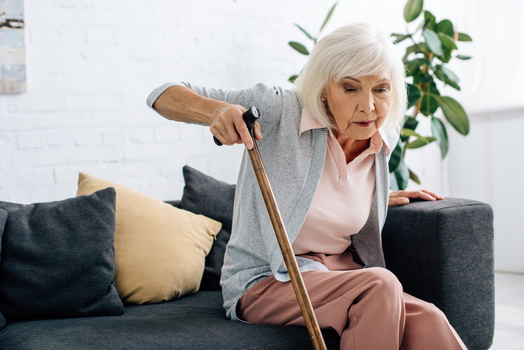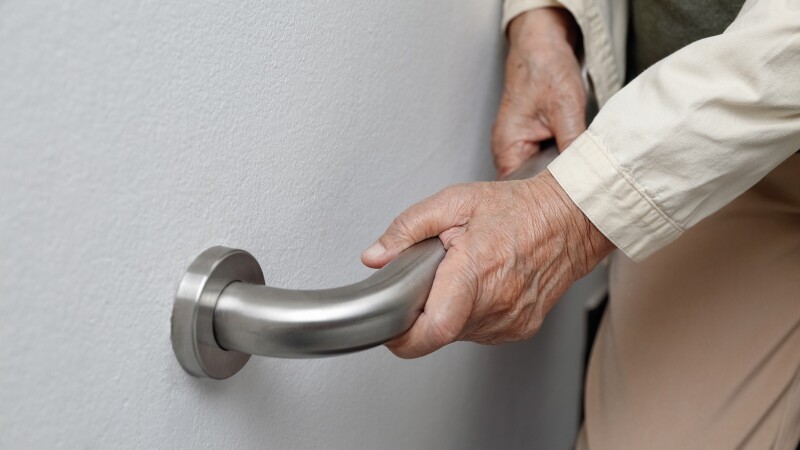In today’s rapidly advancing world, fall detection technology has become a critical topic, especially for those who care for the elderly. This technology is transforming how we ensure the safety and well-being of our senior loved ones. With falls being one of the leading causes of injury among older adults, it’s crucial to understand how these systems work and how they can be integrated into daily life to provide peace of mind for families and caregivers.
The use of fall detection technology is not just about preventing accidents, but also about promoting independence among seniors. By leveraging modern technology, we can create a safer environment that empowers seniors to live more freely.

Understanding Fall Detection Technology
At its core, fall detection technology involves using sensors and devices to identify when a fall has occurred. These systems often use a combination of accelerometers, gyroscopes, and sometimes cameras to monitor movement patterns. When a fall is detected, the system can automatically alert caregivers or emergency services, ensuring a rapid response.
How Do Fall Detectors Work?
Fall detectors typically employ wearable devices, like smartwatches or belt clips, to track the user’s movements. These devices are equipped with sensors that can distinguish between normal movements and falls. Upon detecting a fall, the device sends an alert to a predetermined contact list.
Types of Fall Detection Devices
There are several types of fall detection devices available, including wearable devices, camera-based systems, and smart home integrations. Each of these has its own advantages and can be selected based on the specific needs of the user.
The Importance of Fall Detection for Seniors
For seniors, falls can lead to severe injuries, decreased mobility, and a loss of independence. The introduction of fall detection technology plays a vital role in mitigating these risks. By ensuring that help is always available, seniors can maintain their independence longer, and families can have peace of mind.
Reducing Emergency Response Times
One of the most significant benefits of fall detection technology is the reduction in emergency response times. By immediately notifying emergency contacts or services, these systems ensure that help arrives as quickly as possible, which can be crucial in the event of a serious injury.
Encouraging Independence
With the added security of knowing that help is just a button press away, seniors are more likely to engage in daily activities without fear. This encourages a more active lifestyle, which is beneficial for both physical and mental health.
Integrating Fall Detection with Other Safety Measures
To maximize the benefits of fall detection technology, it’s important to integrate it with other safety measures. This includes organizing the home environment, engaging in regular fall prevention exercises, and using supportive devices like hip protectors.
Laundry Safety
Ensuring that household tasks are safe for seniors is crucial. Simple adjustments, like securing rugs and using non-slip mats, can prevent accidents in the home.
Fall Prevention Exercises
Regular exercise designed to improve balance and strength can significantly reduce the risk of falls. These exercises are an excellent complement to fall detection systems.
Hip Protectors
Wearing hip protectors can help minimize injuries in the event of a fall. They offer additional protection and peace of mind for both seniors and their caregivers.
The Future of Fall Detection Technology
The future of fall detection technology is promising, with ongoing advancements in artificial intelligence and machine learning. These technologies are making fall detection systems more accurate and reliable, providing an even greater level of safety for seniors.
AI and Machine Learning
By incorporating AI and machine learning, fall detection systems are becoming more adept at distinguishing between different types of falls and movements, reducing false alarms and ensuring that real emergencies are prioritized.
Smart Home Integrations
As smart home technology continues to evolve, integrating fall detection systems with other smart devices offers a seamless and comprehensive safety solution. These integrations allow for automated lighting, door locks, and temperature controls, enhancing the overall safety of the living environment.
Choosing the Right Fall Detection System
When selecting a fall detection system, it’s important to consider factors like ease of use, accuracy, and compatibility with other devices. Understanding the specific needs of the senior user can guide the decision-making process.
Ease of Use
The best fall detection systems are intuitive and easy to operate, ensuring that seniors can use them without difficulty. Simple interfaces and clear instructions are key features to look for.
Accuracy and Reliability
Accuracy is crucial in fall detection technology. Systems that can accurately detect falls while minimizing false alarms are the most effective. It’s important to research and choose a system that has a proven track record of reliability.
Compatibility with Other Devices
For a holistic approach to safety, it’s beneficial to select a fall detection system that is compatible with other smart home devices. This ensures a cohesive safety network within the home.
Conclusion
As we look to the future, fall detection technology remains a cornerstone in ensuring the safety and independence of our senior population. By understanding and utilizing these technologies, families and caregivers can create a safer and more supportive environment for their loved ones.
For more tips on creating a safe living environment for seniors, visit Amica.

FAQ
What is fall detection technology?
Fall detection technology uses sensors and devices to identify when a fall occurs, automatically alerting caregivers or emergency services for a rapid response.
How does fall detection improve senior safety?
It reduces emergency response times and allows seniors to maintain their independence by providing immediate assistance in the event of a fall.
Are there different types of fall detection devices?
Yes, there are several types, including wearable devices, camera-based systems, and smart home integrations, each offering unique benefits.
This article contains affiliate links. We may earn a commission at no extra cost to you.






